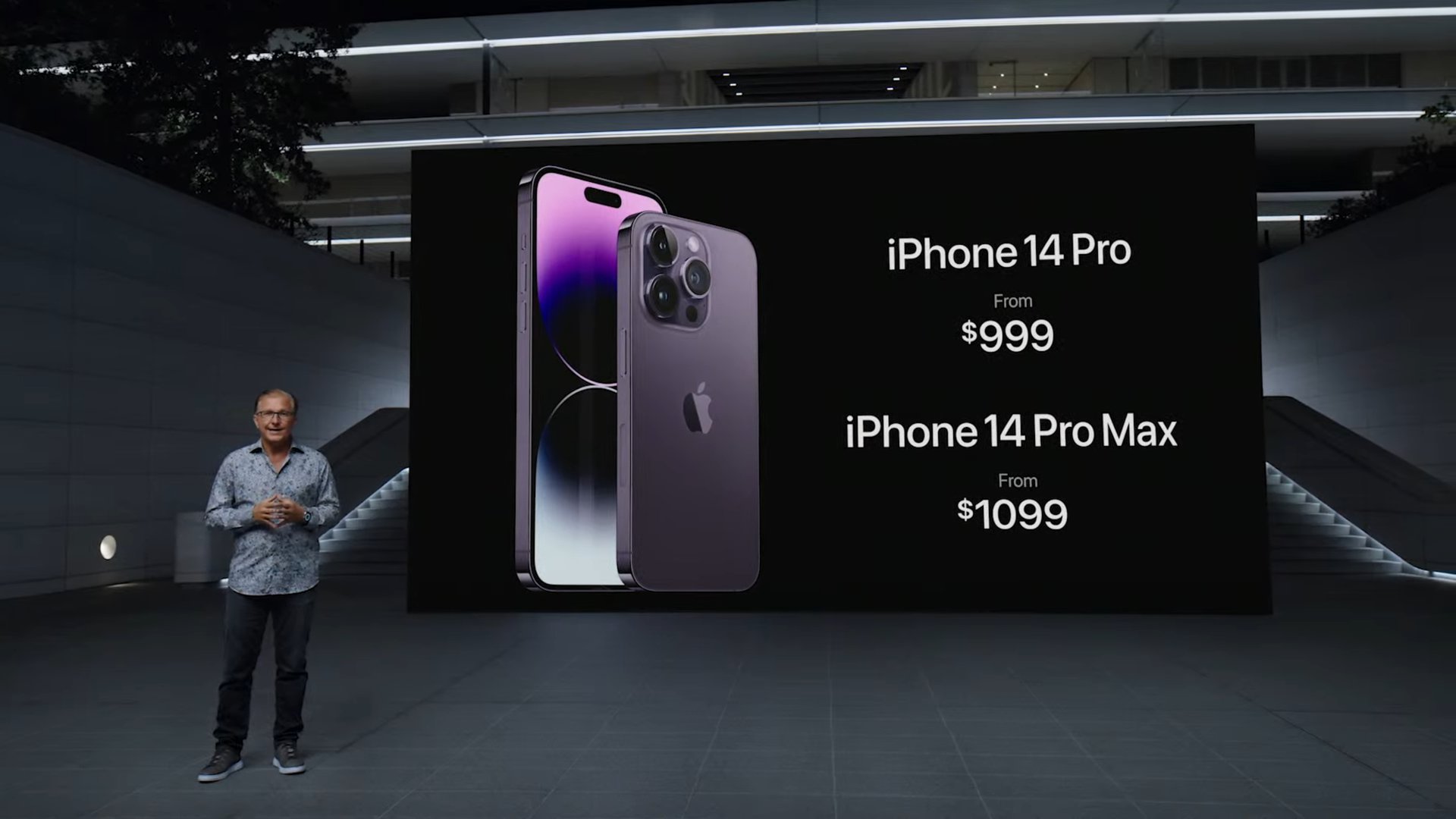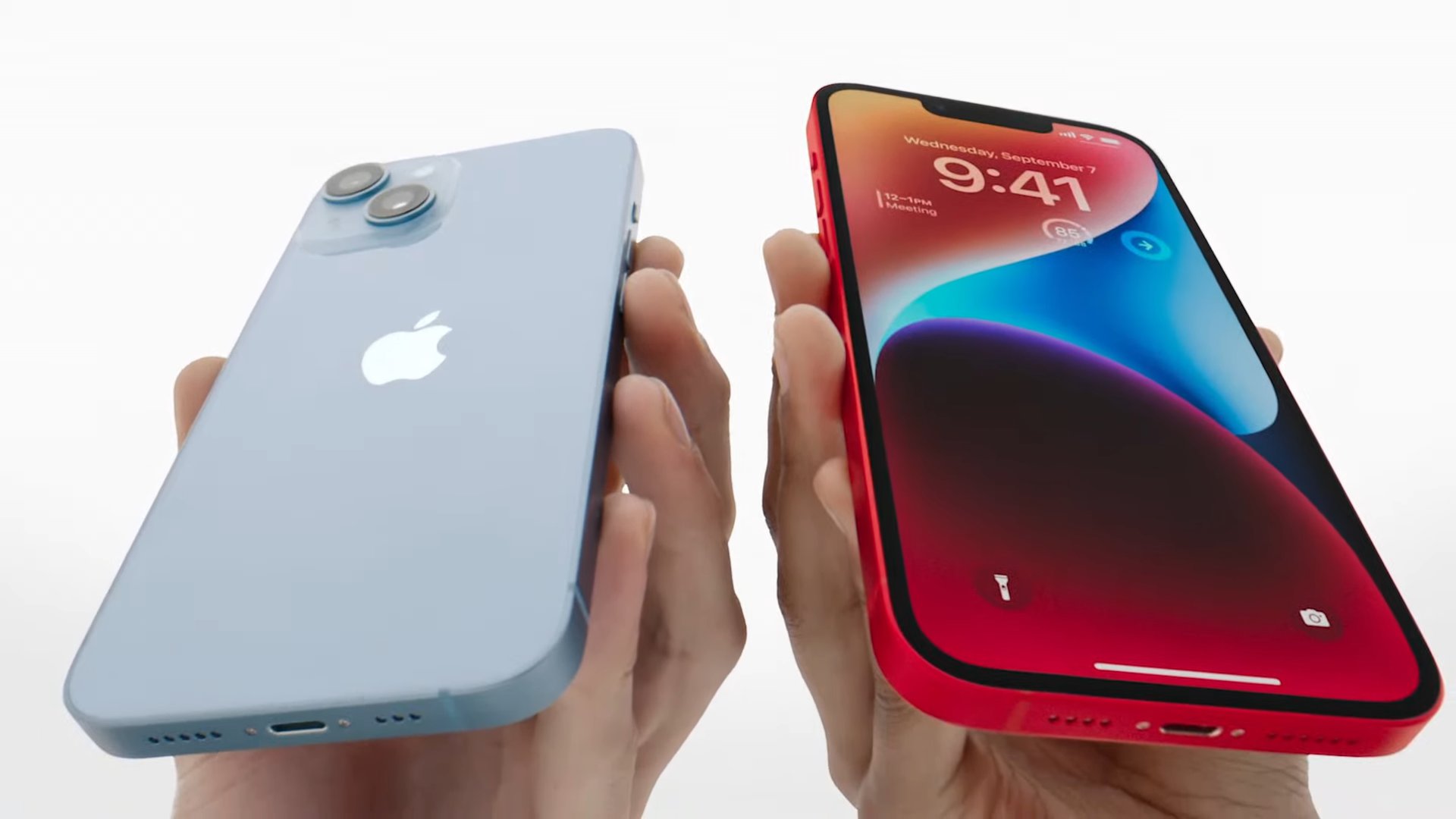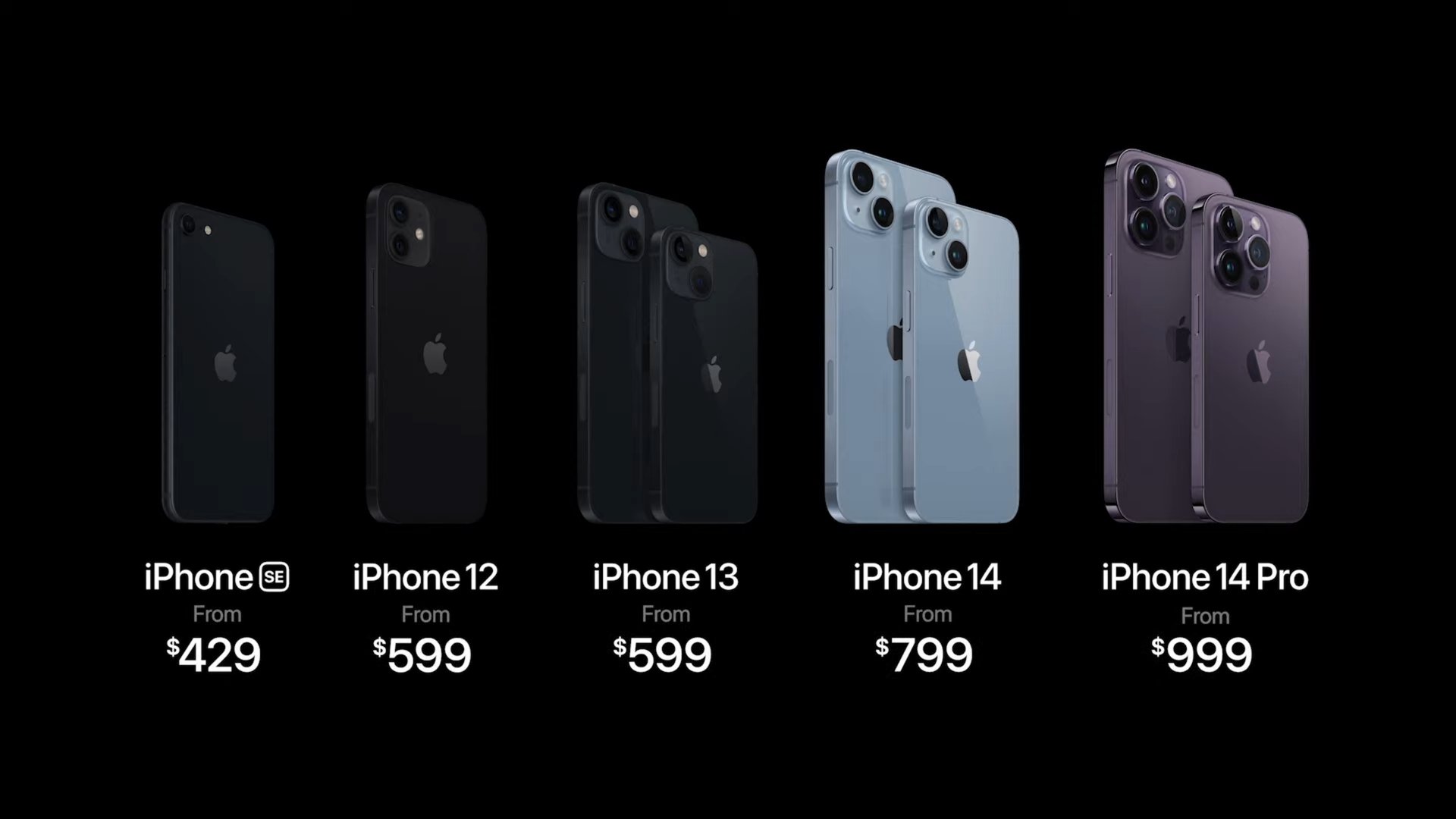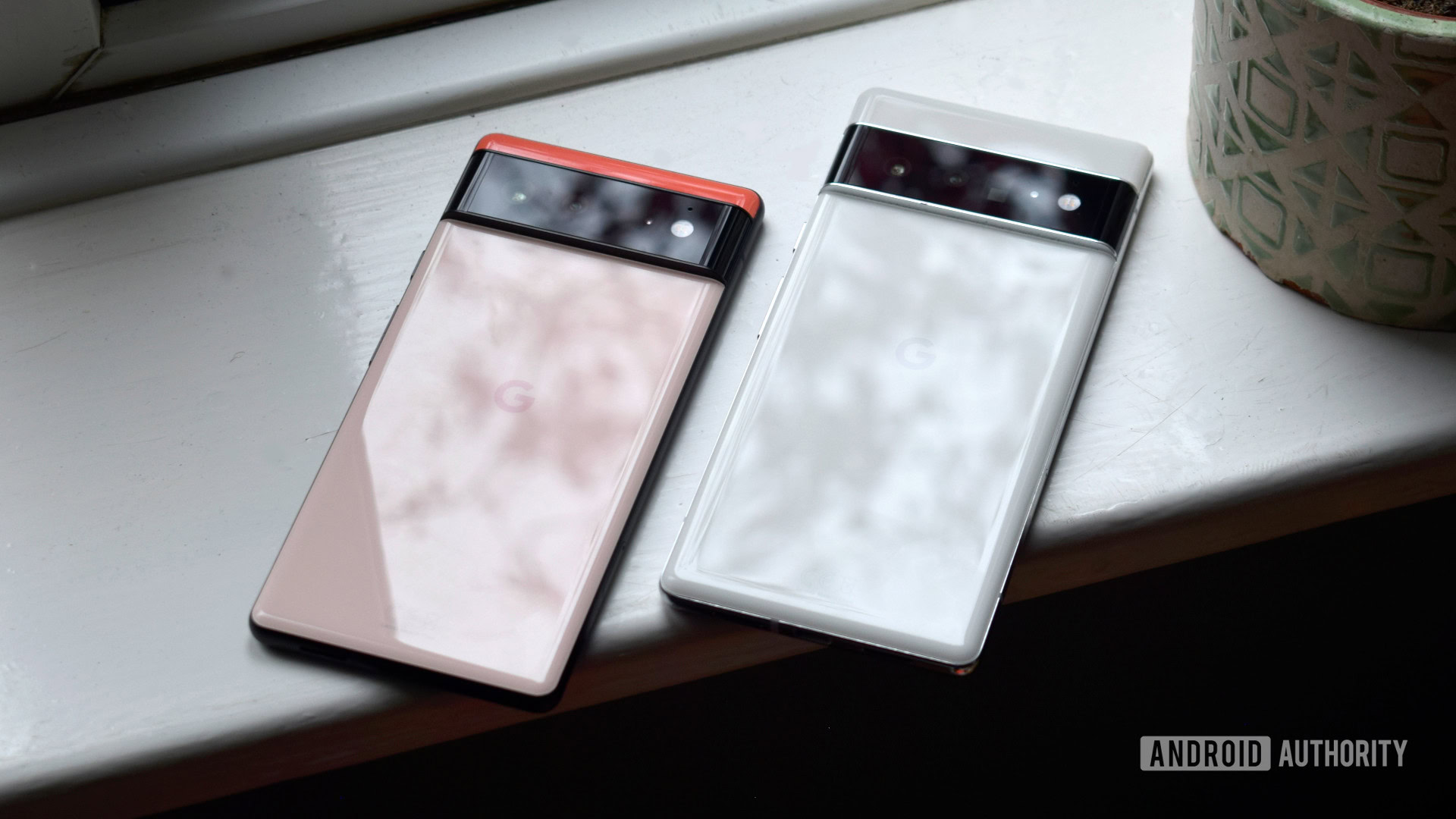Affiliate links on Android Authority may earn us a commission. Learn more.
With the iPhone 14, Apple is drawing a line between experts and normies

On Wednesday, Apple launched the iPhone 14 series. As with the past three years, the lineup is split, with two semi-affordable entries and two more expensive flagships. In this case, we have the iPhone 14 and iPhone 14 Plus on one end and the iPhone 14 Pro and iPhone 14 Pro Max on the other.
What’s different this time, though, is the disparity between these two sets. This year, more than any other, Apple is working to appeal to two distinct types of iPhone buyers: the experts and the normies.
For the iPhone 11, 12, and 13 series, there was a lot of overlap between the regular phones and the Pro ones. For example, a person who uses their iPhone for CPU-intensive tasks would prize processing power, but they might not care about cameras. This hypothetical buyer could happily grab the iPhone 13 for just $799. They’d get the same CPU and general features as the iPhone 13 Pro but for $200 less.
See also: Which iPhone is right for you?
The iPhone 14 series, though, draws a line in the sand. On one side, you’ll have the power users — folks who need one or many of the high-end features iPhones are known for. On the other side, you’ll have the normies — people who don’t know or don’t care about smartphone tech and just want to upgrade to a new iPhone every few years.
Never before has this line been so distinct. It could fundamentally change how Apple manages its smartphone portfolio. It could also be a lightning rod for change across the entire smartphone industry.
iPhone 14 vs iPhone 14 Pro Max: Two different phones

Samsung has multiple smartphone lines, each with its own identity. The Galaxy S line is the best of the best for the general consumer, while the Galaxy A line appeals to multiple levels of budget shoppers. Meanwhile, the foldable Galaxy Z line goes after the tech enthusiast who wants to be on the cutting edge. This creates multiple categories of phones, each with its own strict appeal to a certain demographic.
Apple only sort of does this. It has the iPhone SE, which strictly goes after a budget consumer. Other than that, though, every other consumer needs to get lumped into the main iPhone line. That sounds more simple than Samsung’s strategy, but it also is more limiting. With so much historical overlap between the four iPhones in the main series, Apple could only do so much to cater each phone to the many different types of buyers.
iPhone buyers must now put themselves into one of two distinct camps: ambivalent normies or passionate experts.
With the iPhone 14 series, Apple is dismantling those limitations. Now, the iPhone 14 and iPhone 14 Plus can exist as phones for the average consumer who upgrades every few years. The Pro models, meanwhile, can specifically appeal to the power user who upgrades more frequently — even yearly. Apple can curate and market these devices for these two distinct sets of buyers.
This creates a very interesting situation. If you hold an iPhone 14 in one hand and an iPhone 14 Pro in the other, you’ll be looking at completely different devices for wildly different people. The Pro model will have a better screen by leaps and bounds, a cutout instead of a notch, a better camera system with an additional lens, and far more premium build materials. Inside, it will have a more powerful chip and better memory management that allow for much-desired usability improvements, including an always-on display.
The iPhone 14 and 14 Pro are completely different phones.
Meanwhile, in your other hand, you’ll have a phone that offers none of those things. You’ll be holding, in a sense, two completely different phones — and each one will land at very different price points.
Power users had better be ready to spend

Let’s go back to the hypothetical buyer who wants all the processing power but doesn’t care about cameras. Previously, they would have been able to buy an iPhone for under $800 and get what they wanted. Now, however, they will need to spend at least $1,000 to get the A16 Bionic, since the iPhone 14 and 14 Plus come with last year’s A15 Bionic.
$1000 is the entry price for Apple's new chip.
This $1,000 price floor now exists for the majority of the new iPhone features announced this year. Want an always-on display? $1,000. Want a 48MP camera? $1,000. Hate the notch? You can (mostly) get rid of it for a cool $1,000.
Related: The history of the iPhone
During its launch event, Apple made a big to-do about how it wasn’t increasing prices for the Pro-level iPhones. That might soften the blow of this new shift. However, Apple conveniently left out a huge chunk of the world with that news, since the new iPhones are indeed increasing in price in other countries.
In Europe, the iPhone 14 Pro Max starts at a whopping €1,479 (~$1,480). And, in the UK, that same phone goes for £1,199 (~$1,383). It would appear that Apple is using the rest of the world to subsidize US pricing and keep it the same as in previous years.
If you're not ready to spend big, you can't get all the new features. This is especially true outside the US.
Once again, this proves Apple is firm about this new line between the normies and the experts. If you’re not ready to spend big on your phone to get all the cool new features, you simply can’t get them. In years past, you could have gotten some of them, but that’s no longer true. Either go big or go home.
That’s just bad news for iPhone users, though, right?
iPhone 14 series: Ramifications for the whole industry

Many of our readers are Android die-hards. They might be thinking to themselves, “This has nothing to do with me.” Ah, but how wrong you are.
History has proven time and time again that the Android industry follows Apple’s lead. Remember when Apple removed the headphone jack? How about when it removed the in-box charger? Android OEMs scoffed at first but now are right on board.
History has proven time and time again that the Android industry follows Apple's lead.
Apple’s moves this year could result in wildly different separations within Android ecosystems. Take the Pixel line. What are the big differences between the Pixel 6 and the Pixel 6 Pro? The Pro has a slightly larger, slightly faster display and an extra camera lens on the back. That’s…pretty much it.
What we could see in the future is a larger separation between pro and non-pro models. This, of course, will mean fewer new features for the non-pro sector. Hypothetically, one could imagine a Pixel 8 that doesn’t offer too many upgrades over the Pixel 7, while the Pixel 8 Pro could offer a ton of terrific new features for much more money.
Expect the gap between 'pro' and 'normal' Android phones growing ever wider.
This would create a very disparate market, moving the price needle higher for what counts as a “flagship.” If you are loaded with cash, you can get all the fun stuff. If you aren’t, you get a few little tidbits. Talk about wealth inequality.
Of course, this is me being pessimistic. This could turn out to be a good thing. Maybe smartphones have become advanced enough that most people will be fine having an affordable device that does just what’s necessary and nothing more. The people who want all the really cool, cutting-edge perks will need to dish out for them. On the surface, that sounds reasonable.
The iPhone 14 series will act as a litmus test for the rest of the industry.
The iPhone 14 series, in a way, will act as a litmus test for the rest of the industry. Will buyers flock to the iPhone 14 and 14 Plus even though they are barely an upgrade over the iPhone 13? Or will they scoff at “upgrading” to a phone that doesn’t even have a new processor? Will they then relent and spend $1,000 to get the new features they really want, or will they just not bother at all? Time will tell. We should all be paying attention, though, because how this goes will be how the industry goes as a whole.
Continued reading: Now’s the right time to buy an iPhone 13